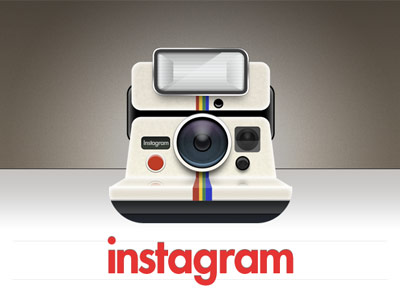NCAA’s Position on Instagram Marks a Regression in Liberalization of Digital Recruiting Practices
Posted by Chris Johnson on October 12th, 2012Chris Johnson is an RTC Columnist. He can be reached @ChrisDJohnsonn.
The age of smartphone-based communication is upon us. There’s no denying it. From pre-pubescent pre-teens to middle-aged parents to retired folks, the instant communication trend has slowly seeped its way into every technological aspect of our lives. For the purposes of college basketball recruiting, this created something of a problem. The NCAA’s previous restrictions on messaging and calling frequency forced coaches to monitor their phone habits with painstaking consistency. On principle, the limitations made absolute sense – messaging fees could get out of hand pretty easily, not every player can afford smart phones, and the risk of players being overwhelmed by a deluge of calls and texts from overeager coaches was very real – but enforcement was tricky and often ineffective. A handful of coaches were slapped with secondary violations for exceeding contact limits, the most notable being Kelvin Sampson, whose profligate recruiting tactics (part of which hinged on his negligence of restricted cellphone use) touched off a precipitous decline for Indiana. The Hoosiers have very much recovered, but it may have been avoided, or at least mitigated, had the NCAA’s bylaws adjusted to the blossoming digital communications market at the time. For better or worse, the restraints on smartphone-tethered communications were officially lifted this past summer, meaning coaches could call or text recruits who have completed their sophomore year in high school.

The NCAA’s blackballing of Instagram is a decided step back after embracing technological growth this summer (Photo credit: businessinsider.com)
Not only did the rule change help coaches by unlocking a new world of streamlined contact – not to mention the stronger recruiting ties forged by more frequent communication – it allowed the NCAA to stop wasting time policing nonsensical secondary infractions and start focusing on violations that actually, you know, matter. The NCAA had finally embraced the modern age. It was a progressive move, all things considered. As is the case with most outwardly positive NCAA rule changes, there’s a caveat. Only this one isn’t prohibitive as much as it is petty. Instagram – the in-vogue photo-sharing application that turns virtually any smartphone owner into a proficient photography aesthete – has officially been outlawed from college coaches’ growing list of technological recruiting mechanisms. The NCAA outlined its position in a Q&A-style educational column earlier this week, and you might be surprised to learn the motives behind this puzzling regulation. The issue stems not from the actual sending of photographs to prospective recruits — the NCAA sent out a clarifying message Thursday detailing the nuances of its prohibitive policy — but from coaches altering or enhancing photos for a “recruiting purpose.”
Question: May a coach take a photo and use software (e.g., Instagram, Photoshop, Camera Awesome, Camera+,) to enhance the content of the photo (e.g., changed color of photo to sepia tones or add content to the photograph), and send it to a prospective student-athlete as an attachment it to an email or direct social media message?
Answer: No, a photograph that has been altered or staged for a recruiting purpose cannot be sent to a prospective student-athlete.
The allure of Instagram lies in its manipulative potential. When you combine unique light and color-altering potential – the retro production values are undeniably exquisite – with an easy sharing interface, the end result is nothing short of enthralling. Users have their own photoshop mechanism at the touch of their thumbs. With a litany of creative tools allowing for a range of creative tweaks and a simple network dissemination process, the marriage of user-friendly sharing and aesthetic stimulation is simply brilliant. It’s also at the crux of the NCAA’s interpretive stance to disallow the application. Because Instagram and other photo-enhancement applications offer so much digital-qualifying freedom, there’s no telling the lengths tech-savvy coaches will go to adjust photos to their recruits’ liking. Players can be cropped out, basketballs relocated, uniforms redesigned, memorabilia multiplied. This is what the NCAA means by “recruiting purpose.” That’s said, it would take some serious Instagram dexterity to pull off anything that would change a recruit’s mind about his program of choice. Sepia-toned imagery and blurred framing is one thing. Convincing a recruit to commit to your program with deft photoshop skills requires a whole new level of digital mastery and prospect gullability. I don’t imagine any aspiring college recruit will change course after taking in a few Instagram photos, no matter how advanced their degree of visual mutation.
Inane legislative scruples have become a hallmark of NCAA enforcement. The Instagram ban, despite the application’s sinless functionality, is hardly a huge surprise. But before you go off on another NCAA- related tirade, give the organization some credit. The move to expand texting and calling freedoms cut down trivial recruiting infractions and advanced the year-long operation into its rightful place in this bountiful technological era. The limitations on photo-sharing applications are just one drawback to an overwhelmingly positive year in the realm of digital recruiting devices. Puzzling though they may be, the NCAA’s enforcement minutiae are what they are: equivocal, ambiguous and vague. I mean, come on. In the grand scheme, what’s wrong with Instagram??












































